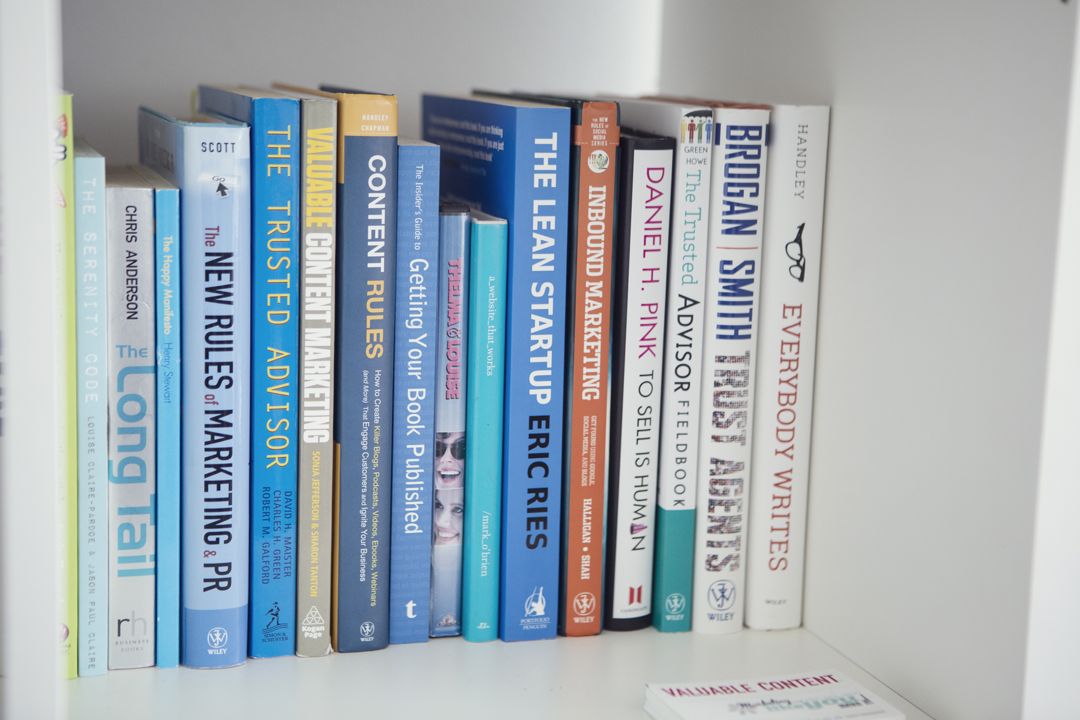We should be on the home straight now, and we are getting there, but this book writing is definitely hard going. Coping with the demands of clients, families and relationships while notching up the word count is taking its toll. Before the scars fade from our memories, we thought we’d share some of the things that have made the process of writing the Valuable Content Marketing book easier.
What we have learned about book writing
1. Writing with a partner is good. Aside from the obvious division of labour bonus, having someone else as interested as you in the ideas, shape and detail of the book is a definite plus. Writing it alone would have been a much harder slog. At times getting it right has felt like an obsession, so it’s been good to share it with someone who understands.
2. Taking time away works well. A writing trip to Aberdovey has been my highlight of the process so far. It’s much easier to think clearly when you’re away from everything. Even though a lot of what we wrote during the two days away has been edited out now, the thinking and planning we did far from the office has shaped the book. It also gave us a big burst of energy and inspiration that carried us a long way.
3. Deadlines focus the mind. We would never have got this far without a real life publisher’s deadline hanging over us.
4. Working with an editor helps. We’ve had invaluable support from Robert Watson. A critical eye during the process, at a time when you’ve still got room for maneuver will help you get it right. Be prepared to make big structural changes, as well as minor editorial ones.
5. Write at a time that suits you. I never thought I’d be a 6.30 am person, but there have been weeks when I’ve been getting up at that time to write, because it works for me. Sonja works better at night.
6. Come to terms with the fact you’ll have to say ‘no’ a lot. We’ve both had to turn down client work (scary), disappoint our kids (we’ll make it up to them! ) and generally not be around as much as people we care about would like. If you’re going to commit to writing a book, something else will have to give.
7. Printing it out and reading it on paper is part of the process We got so used to writing and reading on screen that we almost forgot it was a book we are writing, and not a website. Google Docs was really useful for online collaboration in the early stages but something happens when you see it on paper, and turn real pages. It’s much easier to see its failings when it’s in the right format. And it’s exciting too; it makes you feel like you’re getting somewhere – boosts like that are really welcome.
What works for you? We’d love to know.
Other articles you might like:
- How to get the writing done
- The Valuable Content Marketing book – the story so far
- Publish or self-publish




Please Help – my wife is writing a book!
For all spouses / partners of authors in full flow, then I would suggest a good support network, ideally one that sells beer. I can confirm that writing a book is tough going for all and should not be undertaken lightly. Can’t wait to see the final book though. Keep going – you’re nearly there.
Thanks JJ. You can have her back soon, I promise! And I’ll buy you a beer! x
Keep going girls, it’s looking great so far! It’s going to be worth it.
Thanks Bill and JJ. Damn it’s hard work. Thanks for all your support and I’m sorry we’ve been so distracted!
Many thanks for the kind mention 🙂 Maybe I can offer your readers some tips, in case they decide to write a business book one day.
Despite being confident with their subject matter, most authors still struggle. You are probably familiar with the quote, “How do you eat an elephant?” A: “One bite at a time.” Well, for once, that cliche can be applied brilliantly for the writer… “Chunking” the task down is so easy!
1) A typical book has 10 chapters, so write the names of the chapters down.
2) Each chapter will typically have 5 subheadings, so write those down.
3) Each subheading will have 5 key points, so write those down.
So, the task becomes a matter of writing 1 page for each of 250 key points, resulting in a 300 page book (when you add Intro, Index and some diagrams).
If there is any “secret” here, it is simply that writing 250 blog-sized pieces is psychologically manageable – like simply filling in the blank spaces on a huge Bingo card. And get this: the first space is filled after just 1 hour!
When the author goes home after their first day of writing, progress has been made – 16 spaces are filled. They have earned that beer!
In just a few weeks, a manuscript has been produced. Yes, it is rough, but it is all there and complete. “Polishing” it into a proper book might take a further 4 to 8 weeks, but the excitement for the author is watching the book get better, and better, and better!
Perhaps this template approach might encourage one of your followers to put pen to paper 🙂
There is no greater joy to an author than to hold, smell and hug the first hard copy of their book when it is delivered from the printers!
Cheers, R
That is very useful indeed Robert. Can’t wait to hold all this work in book format. Thanks for all the help so far. Sonja
Great tips. Learning alot from following you girls. Thanks for sharing.